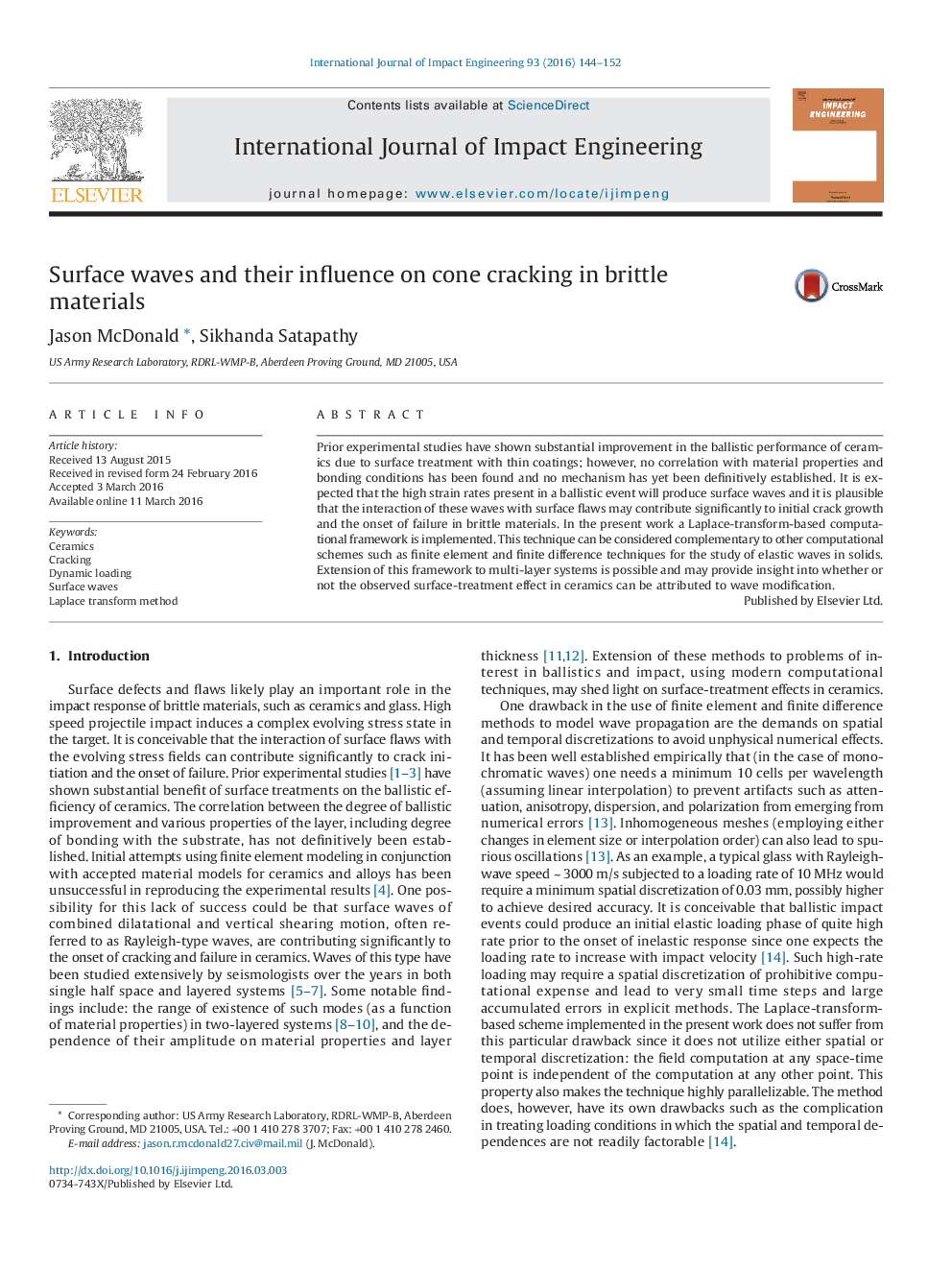| Article ID | Journal | Published Year | Pages | File Type |
|---|---|---|---|---|
| 782747 | International Journal of Impact Engineering | 2016 | 9 Pages |
•A Laplace-transform-based computational method is implemented for modeling wave effects in brittle solids.•The implemented computational method is used to compute solutions for the displacement and stress fields due to dynamic loading by a cylindrical punch.•Predicted cone cracks, generated by both quasi-static and dynamic loading conditions, are compared and contrasted.
Prior experimental studies have shown substantial improvement in the ballistic performance of ceramics due to surface treatment with thin coatings; however, no correlation with material properties and bonding conditions has been found and no mechanism has yet been definitively established. It is expected that the high strain rates present in a ballistic event will produce surface waves and it is plausible that the interaction of these waves with surface flaws may contribute significantly to initial crack growth and the onset of failure in brittle materials. In the present work a Laplace-transform-based computational framework is implemented. This technique can be considered complementary to other computational schemes such as finite element and finite difference techniques for the study of elastic waves in solids. Extension of this framework to multi-layer systems is possible and may provide insight into whether or not the observed surface-treatment effect in ceramics can be attributed to wave modification.
